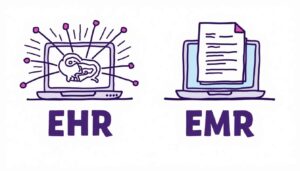How Medical and Dental Virtual Assistants Are Revolutionizing Healthcare
18 Jul 2025 By: Vlade Legaspi
Updated
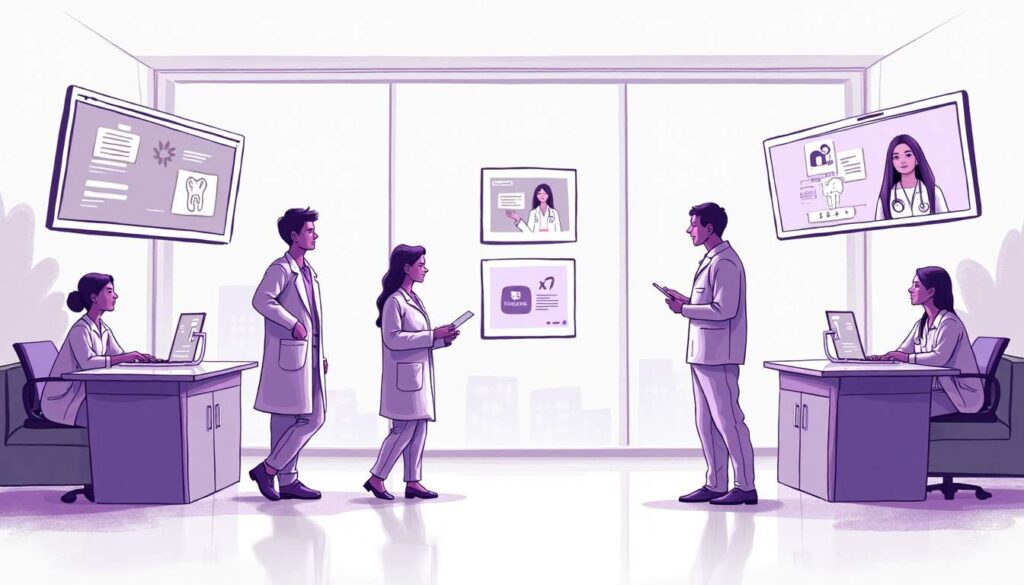
The healthcare industry is undergoing a profound transformation driven by technological innovation. Among the most impactful advancements are medical and dental virtual assistants, AI-powered tools designed to streamline administrative tasks, enhance patient engagement, and improve clinical workflows. These digital helpers are not only reshaping how healthcare providers operate but also redefining patient experiences and outcomes.
As the demand for efficient, accessible, and personalized care grows, virtual assistants have emerged as indispensable allies for medical and dental professionals. This article explores how these technologies are revolutionizing healthcare, the benefits they bring, and what the future holds for providers and patients alike.
Understanding Medical and Dental Virtual Assistants
What Are Virtual Assistants in Healthcare?
Medical and dental virtual assistants use AI and natural language processing to take on tasks that are usually handled by front desk staff. They help with scheduling, manage patient records, answer common questions, and even support clinical documentation, freeing up time for healthcare providers to focus on patient care.
Unlike generic virtual assistants, these specialized tools are tailored to the unique needs of healthcare environments. They understand medical terminology, comply with privacy regulations like HIPAA, and integrate seamlessly with electronic health record (EHR) systems. This level of specialization not only enhances efficiency but also ensures that patient interactions are handled with the utmost care and confidentiality, which is paramount in healthcare settings.
Moreover, the implementation of medical and dental virtual assistants can significantly improve patient engagement. By providing 24/7 access to information and services, these assistants empower patients to take charge of their healthcare journey. For instance, patients can receive reminders for medication refills or upcoming appointments, helping to reduce no-show rates and improve overall health outcomes.
Types of Virtual Assistants in Medical and Dental Practices
Virtual assistants in healthcare come in several forms, including:
- Chatbots: Text-based assistants that interact with patients via websites or messaging platforms to answer FAQs, book appointments, or provide pre-visit instructions. These chatbots can be programmed to handle a wide range of inquiries, from basic health information to complex insurance questions, making them invaluable for both patients and healthcare providers.
- Voice-activated Assistants: Tools that use speech recognition to help clinicians document notes, retrieve patient information, or set reminders without interrupting their workflow. This hands-free capability allows healthcare professionals to maintain focus on patient care while still ensuring accurate record-keeping.
- Administrative Bots: AI systems that automate billing, insurance verification, and patient follow-ups, reducing administrative burdens. By streamlining these processes, practices can allocate more resources toward direct patient care, ultimately enhancing the patient experience.
In addition to these types, some virtual assistants are designed to facilitate telehealth services, allowing patients to connect with healthcare providers remotely. This capability has become increasingly important in the wake of the COVID-19 pandemic, as many patients prefer the convenience and safety of virtual consultations. These assistants can help triage patient needs, ensuring that individuals receive the appropriate level of care without unnecessary delays.
Furthermore, as technology continues to advance, the potential for virtual assistants in healthcare is expanding. Innovations such as predictive analytics and machine learning are paving the way for even more sophisticated tools that can anticipate patient needs and tailor interactions accordingly. This evolution not only promises to enhance operational efficiency but also to improve the overall quality of care delivered to patients.
Enhancing Patient Engagement and Access to Care

24/7 Availability and Instant Responses
One of the most significant advantages of virtual assistants is their ability to provide around-the-clock support. Patients can schedule appointments, request prescription refills, or get answers to common questions at any time, without waiting for office hours. This immediacy improves patient satisfaction and reduces no-show rates.
For example, dental practices using virtual assistants have reported up to a 30% increase in appointment bookings outside traditional hours, demonstrating how accessibility drives patient engagement. This shift not only benefits the patients but also enhances the operational efficiency of healthcare providers, allowing them to optimize their schedules and reduce administrative burdens. With the ability to handle routine inquiries and tasks, staff can focus on more complex patient needs, ultimately improving the overall quality of care.
Personalized Patient Communication
Virtual assistants can tailor interactions based on individual patient profiles, medical histories, and preferences. By sending appointment reminders, post-treatment care instructions, and wellness tips via SMS or email, these tools foster continuous communication and encourage proactive health management.
Moreover, AI-driven assistants can identify patients at risk of missing follow-ups or screenings and prompt timely outreach, contributing to better health outcomes. This proactive approach not only helps in maintaining patient adherence to treatment plans but also empowers patients to take charge of their health. For instance, by providing personalized health tips based on a patient’s specific conditions, virtual assistants can motivate individuals to engage in healthier lifestyle choices, such as diet modifications or increased physical activity, thereby enhancing their overall well-being and reducing the risk of chronic diseases.
Streamlining Clinical and Administrative Workflows
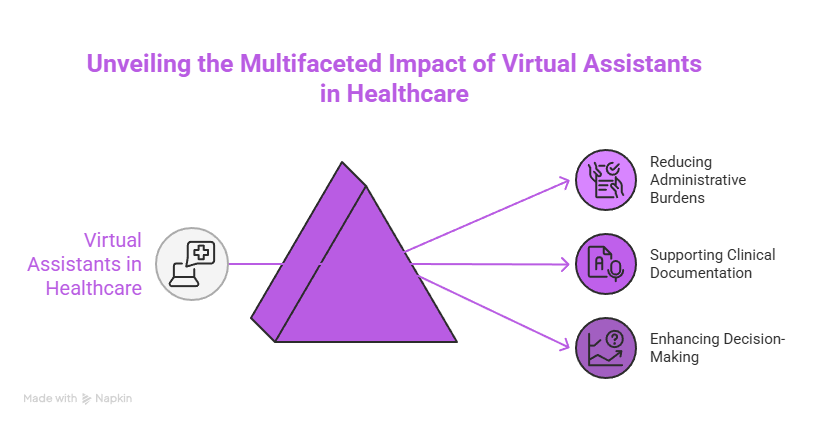
Reducing Administrative Burdens
Healthcare providers often spend a significant portion of their time on paperwork and administrative tasks. Virtual assistants automate many of these processes, such as verifying insurance eligibility, processing payments, and managing patient intake forms. This automation not only saves time but also reduces errors associated with manual data entry. By streamlining these administrative workflows, healthcare facilities can operate more efficiently, allowing for a smoother patient experience from the moment they schedule an appointment to the time they leave the clinic.
Studies indicate that clinicians spend nearly 50% of their workday on administrative duties. By offloading these tasks to virtual assistants, providers can dedicate more time to direct patient care, enhancing both efficiency and job satisfaction. Moreover, this shift can lead to improved patient outcomes, as healthcare professionals are able to focus on building stronger relationships with their patients, understanding their needs better, and providing personalized care. The reduction in administrative burdens also allows for a more balanced workload, which can contribute to lower burnout rates among healthcare staff and higher retention of skilled professionals.
Supporting Clinical Documentation and Decision-Making
Voice-activated virtual assistants are transforming clinical documentation by allowing providers to dictate notes during patient encounters. These assistants transcribe and organize information directly into EHRs, minimizing the need for after-hours charting and reducing burnout. This capability not only enhances the accuracy of clinical records but also allows healthcare providers to maintain eye contact with patients, fostering a more compassionate and engaging environment during consultations.
Additionally, some advanced virtual assistants offer clinical decision support by analyzing patient data and suggesting evidence-based treatment options or flagging potential drug interactions. This integration helps improve diagnostic accuracy and patient safety. By leveraging machine learning algorithms, these virtual assistants can continuously learn from new data and clinical guidelines, ensuring that healthcare providers have access to the most current information at their fingertips. Furthermore, as these technologies evolve, they promise to enhance collaborative care by facilitating communication among multidisciplinary teams, ultimately leading to more comprehensive and coordinated treatment plans for patients.
Improving Practice Management and Financial Performance
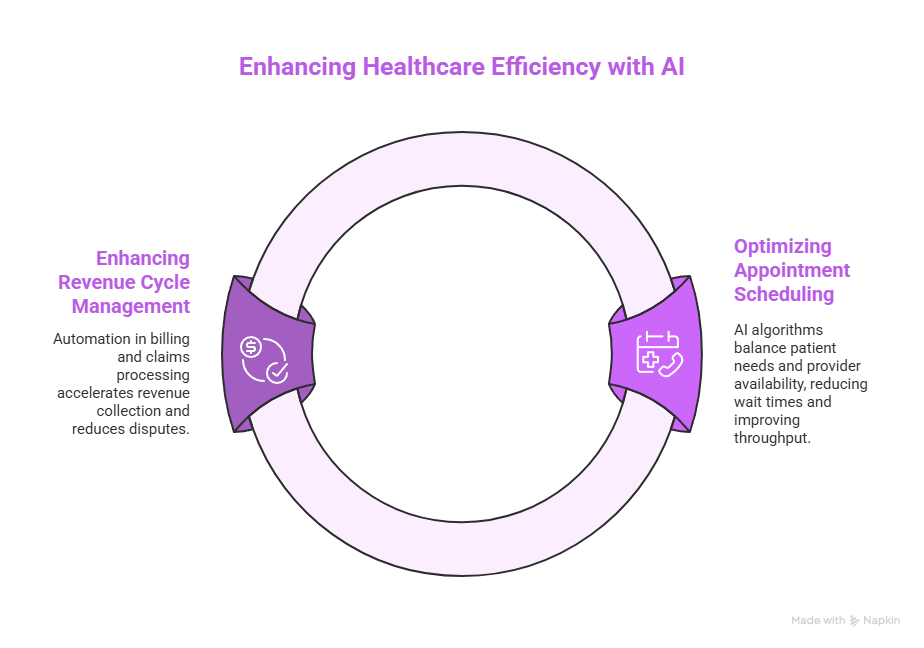
Optimizing Appointment Scheduling and Patient Flow
Virtual assistants use AI algorithms to optimize appointment scheduling, balancing patient needs with provider availability. They can automatically fill cancellations, prioritize urgent cases, and manage waitlists, leading to more efficient use of resources and reduced patient wait times.
Dental clinics leveraging these technologies have reported a 20% improvement in patient throughput, allowing them to serve more patients without compromising quality of care.
Enhancing Revenue Cycle Management
By automating billing, claims processing, and payment reminders, virtual assistants help reduce claim denials and accelerate revenue collection. They also assist patients in understanding their bills and insurance coverage, which can improve payment rates and reduce administrative disputes.
Healthcare organizations utilizing virtual assistants for revenue cycle management have seen reductions in accounts receivable days and improvements in cash flow, contributing to overall financial health.
Addressing Challenges and Ensuring Ethical Use
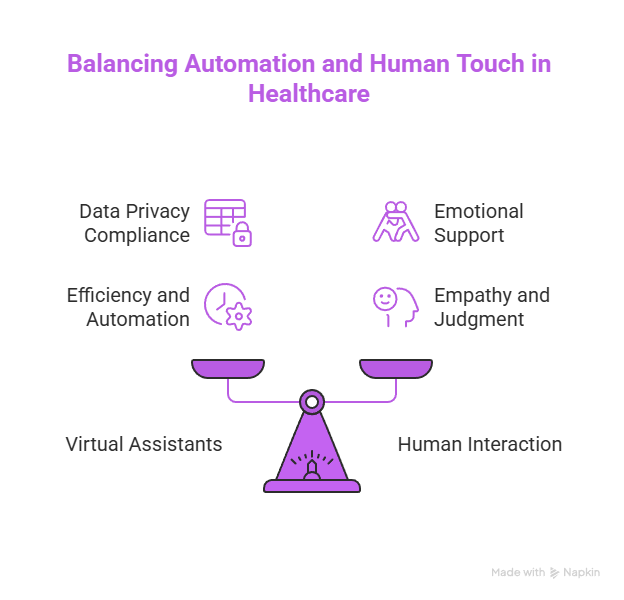
Data Privacy and Security Considerations
Given the sensitive nature of medical and dental information, virtual assistants must adhere to stringent data privacy and security standards. Compliance with regulations such as HIPAA in the United States is essential to protect patient confidentiality and maintain trust.
Healthcare providers should evaluate virtual assistant vendors carefully, ensuring robust encryption, secure data storage, and transparent privacy policies.
Maintaining Human Touch in Healthcare
While virtual assistants offer numerous efficiencies, they are not a replacement for human interaction. Emotional support, empathy, and complex clinical judgment remain the domain of healthcare professionals. The best implementations use virtual assistants to augment, not replace, human care, allowing providers to focus on what they do best.
Balancing automation with personalized care is key to maximizing the benefits of virtual assistants without compromising patient experience.
The Future of Virtual Assistants in Medical and Dental Care
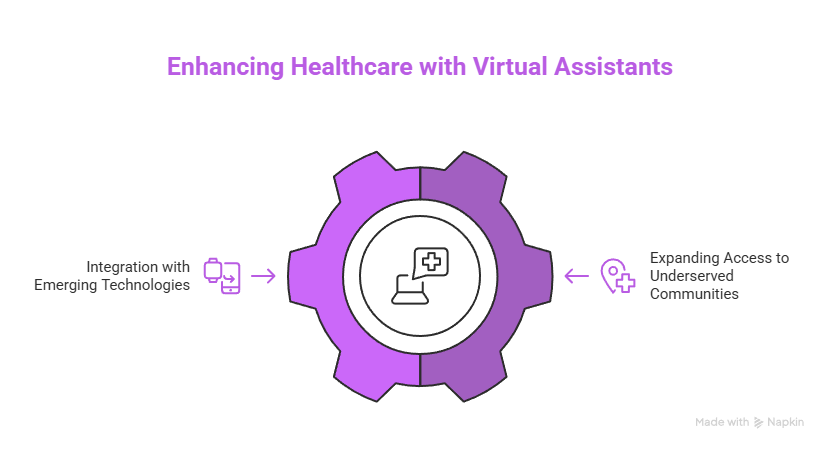
Integration with Emerging Technologies
The future promises even more sophisticated virtual assistants powered by advances in machine learning, natural language understanding, and predictive analytics. Integration with wearable devices and remote monitoring tools will enable real-time health tracking and personalized interventions.
For instance, virtual dental assistants could soon analyze intraoral scans and patient history to recommend preventive care strategies, while medical assistants might predict disease risks based on genetic data and lifestyle factors.
Expanding Access to Underserved Communities
Virtual assistants have the potential to bridge gaps in healthcare access, particularly in rural or underserved areas. By providing remote consultations, appointment scheduling, and health education, these tools can connect patients with providers regardless of geographical barriers.
This democratization of healthcare services aligns with global efforts to improve health equity and outcomes for all populations.
TRENDING NOW!
Dental virtual assistants ease a dentist’s workload by handling admin and clinical tasks remotely. They manage records, billing, appointments, and social media. By taking care of these tasks, they give dentists more time to focus on patients. It’s no surprise that more practices are turning to virtual help. HelpSquad Health offers trained VAs who are quick to onboard, respect patient privacy, and deliver great support. They work in your time zone and help your office run better every day.
Conclusion
Medical and dental virtual assistants are revolutionizing healthcare by enhancing patient engagement, streamlining workflows, and improving financial performance. Their ability to operate 24/7, personalize communication, and support clinical decision-making makes them invaluable assets in modern healthcare settings.
As technology continues to evolve, virtual assistants will become even more integral to delivering efficient, accessible, and high-quality care. Healthcare providers who embrace these innovations stand to benefit from improved operational efficiency and patient satisfaction, ultimately advancing the future of medicine and dentistry.
Medical and dental virtual assistants are changing how healthcare works by boosting efficiency, improving care, and saving time. HelpSquad Health leads this shift with skilled VAs who handle tasks with speed, privacy, and care, helping your practice grow while you focus on patients.


